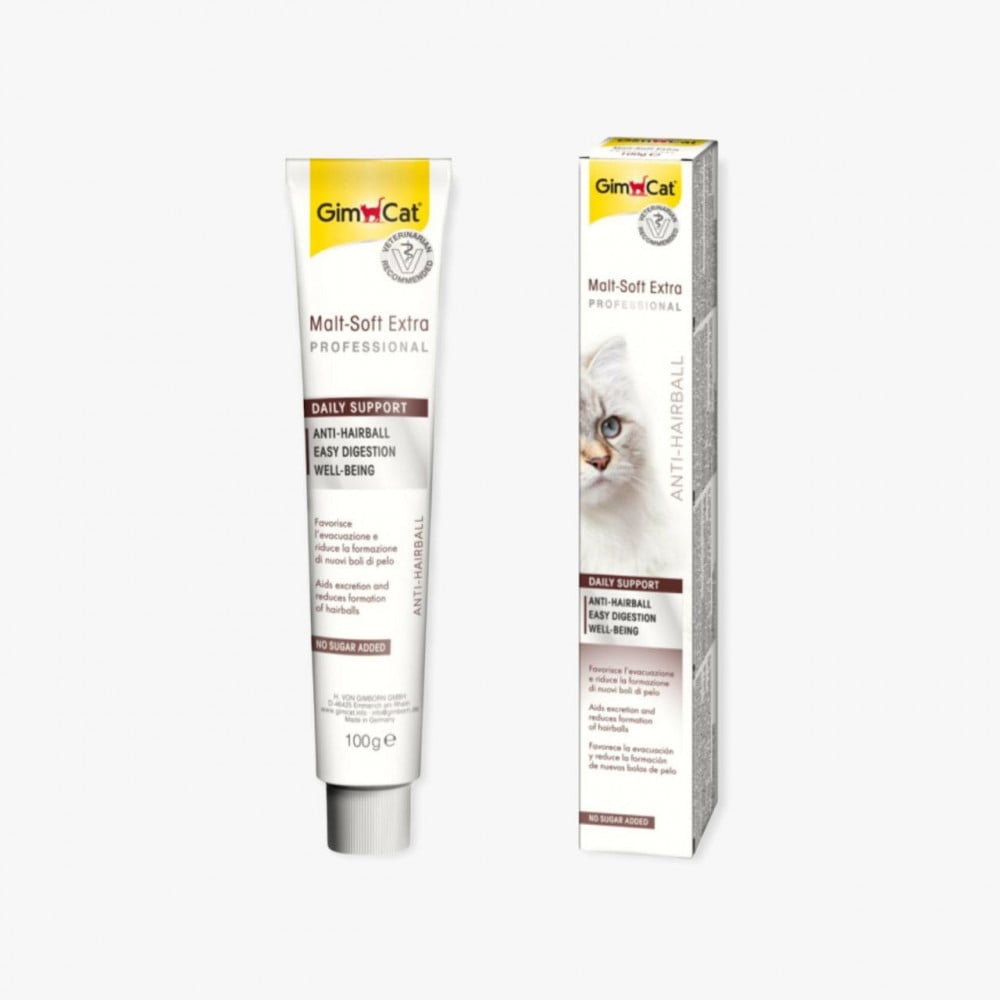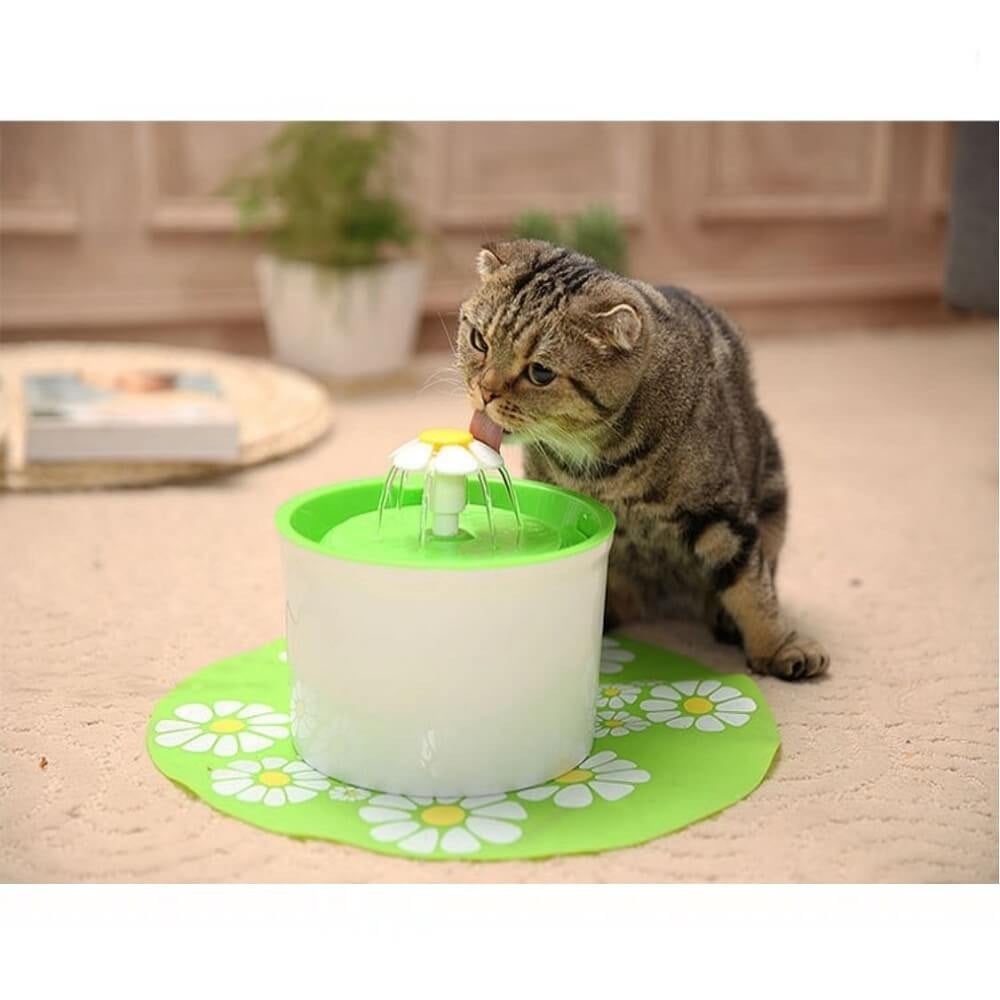
Are you worried about your cat having a fever? Do you know how to recognize signs of fever in cats? As a cat owner, it's important to know the symptoms of cat fever and when you need a feline antipyretic so that you can know when your cat might be sick and what you can do about it. You will find out all about this in this guide from Betaholic. You can also buy all your cat supplies from our store, where you will no longer have to worry about your cat’s health.
How do you know if your cat needs a feline antipyretic and what are the symptoms of fever?
Here are some of the most common symptoms of fever in cats. This information will help you determine when your cat may need a primary care vet visit, or an emergency visit to be prescribed a fever reducer.
What is the normal temperature for cats?
Normal body temperature for cats can vary slightly from person to person, but is usually within a specific range. A rectal temperature is usually used to measure a cat's temperature. The normal range for cats is usually between 38.1°C and 39.4°C (100 to 102.5°F).
1. Inactivity
Lethargy is a common symptom of fever in cats, just as it is in humans with fever. Sick cats with fever often do not feel like getting up and going about daily activities. They may show less interest in normal daily activities, and may just want to sleep instead. Lethargy is also a common symptom of almost all cat diseases. So you can't assume your cat has a fever just because it's lethargic.
2. Hiding and isolation
Hiding is a common sign of illness in cats, especially if your cat doesn't normally exhibit this behavior. Cats often hide as a way to hide their illness from those around them. She will also often hide due to stress. Although hiding may be a sign of many other illnesses, it may also be an indication that your cat has a fever. If you are able to coax your cat out of its hiding place and it is otherwise behaving normally, you should watch for recurrence or other signs of fever.
3. Loss of appetite
Cats with any disease may be less interested in food and water than usual. If your cat suddenly stops eating and is not drinking much water, this usually indicates that something is wrong.
Fever is not the only possible cause of these symptoms; However, loss of appetite is a common consequence of fever. Cats with fever simply don't feel well enough to eat. Losing interest in water is also concerning, as it can quickly lead to dehydration, which can be fatal in severe situations, especially when not treated immediately.
4Shudder
Shivering or shivering is another possible sign of fever in cats. Cats generally do not shiver for many reasons other than fever. If your cat is shivering, especially along with any of the other symptoms on this list, there's a good chance she has a fever.
Although you may be tempted to warm your cat when it is shivering, we prefer that you seek veterinary care; Because this way you risk overheating your cat and causing more damage. In this case, you can offer your cat a blanket to sit on, but not cover it completely, or use a heater near it.
For the best health care for your cat, we recommend:
How to measure a cat's temperature ?
Before taking your cat's temperature, prepare the supplies you'll need, such as a thermometer, lubricant (such as Vaseline or Jelly), alcohol, paper towels, and a relaxing treat. You can use a glass or digital thermometer, but if using a glass one, it's best to lubricate the end. Slightly. Next, gently lift the cat's tail so that the area is ready to insert the tester. Insert the tester into the anus for about two minutes, then clean the tester with antiseptic alcohol and paper towels to avoid cross-infection. Provide the cat with a relaxing treat after the measurement. If the cat overheats 102 F (39 C), contact your vet immediately, as a high fever can indicate a health problem that requires immediate care.
What are the possible causes of cat fever?
Your cat's fever and high temperature may have no obvious cause. Fever is often a healthy biological response to the threat of disease. However, if your cat's body temperature rises at least four times within two weeks, your cat will need a cat antipyretic and veterinary care. Common causes of fever in cats include:
- Infections from bacteria, viruses and parasites
- Injuries from fighting with other cats
- Medicines or toxins
- Endocrine diseases
- Metabolic diseases
- Immune disorders
- Tumors
To avoid infecting your cat with any possible diseases, we recommend:
How do you help lower your cat's temperature when she has a fever?
How do I treat my cat for fever?
1.Put it in a warm room
Your cat should be kept in a warm, dry room and not exposed to sudden temperature changes. If you have a room with a tiled floor, your cat may feel comfortable lying down in it; Because it will help reduce body temperature. It's important for your cat to feel comfortable, so you may want to move her bed to the room where she rests. You should also try to keep your cat as quiet as possible, and keep this room quiet.
2. Placing a wet towel on her body is the best natural fever reducer for cats
Placing a wet towel on your cat's body can help keep him cool. Rubbing certain areas of the body with a wet towel has also been shown to be effective, such as the armpits, groin, and abdomen. After doing this for about half an hour, you can check your cat's temperature to see if its temperature has dropped. After using the wet towel, you must ensure that all parts of the cat's body that got wet are completely dry.
3. Keep everything the cat needs near her
Your cat will not want to move much when she has a fever. So you should move the food and drink bowls closer to where she is comfortable, and also make sure that her litter box is easily accessible. Your cat will likely stay close to you while she has a fever, so be prepared to shower her with attention and love.
4. Pay attention to hydration and provide water
You can help your cat with a fever by offering adequate amounts of water. Dehydration is a possible cause of fever, so your cat should always have clean water available. If your cat is unable to drink water normally, you can use a syringe (without a needle) to administer water.
Furthermore, if the cat's fever is accompanied by poor appetite, you can give it Gatorade juice or an electrolyte solution designed for children. This helps restore the body's electrolyte balance, especially if the cat is vomiting or suffering from diarrhea.
You can also freeze some water or Gatorade juice into ice cubes and offer it to your cat. This can be an attractive way to encourage her to drink, while also helping to cool her down.
It is important to avoid giving your cat milk, as cats are sensitive to lactose in milk, and this may lead to symptoms such as nausea, vomiting, and diarrhea.
It is recommended to monitor the cat's desire to drink and provide fluids on a regular basis to help treat the fever and improve its general condition.
Water drinker - rose fountain with filter from Petaholic
5. Paying attention to eating
Make sure to provide suitable and delicious food for your cat during the period of fever, as fever requires a large amount of energy, and the cat not eating food may lead to its weakness. If your cat is not interested in eating solid food, you can add some nutrients by offering soft food such as eggs scrambled extra soft, or processed canned tuna is a good option.
If your cat refuses both solid food and soft food, you can use a syringe to administer milk formula intended for sick or nursing cats, which is sold at pet stores. Use a needleless syringe with a capacity between 5 cc and 10 cc.
Gently insert the tip of the syringe into the sides of the mouth. The cat and dog will naturally swallow anything that passes through that area inside the mouth. If your cat is having difficulty eating, consult your veterinarian about high-calorie liquid supplements. Your cat can take these supplements until he is well enough to be able to eat solid food again.
6. Try an herbal recipe
Sage and echinacea are the most effective herbs for treating fever in cats. These herbs are available as treatment drops that you can give to your cat twice a day. You should also check the package of drops to know the recommended dose. If your cat still has a fever after 24 hours, you should go to the vet immediately. This may be a sign that the medication your vet prescribed isn't working, or that the original problem that caused the fever has gotten worse.
To protect your cat from diseases that cause fever, we recommend to you from Petaholic:
Canvit Multi (Multivitamins) for Cats 100g

How do I know that the cat has a fever?
If you feel that your cat may have a fever, it is always best to consult a veterinarian to provide an accurate assessment and reliable diagnosis. However, some signs that may indicate a fever can appear in a cat:
1. Increase in body temperature:
- An increase in body temperature above the normal level (between 38.3 and 39.2 degrees Celsius) is considered a sign of fever. A cat thermometer can be used to measure its temperature.
2. Change in /strong>
Cats with fever may show behavioral changes, such as laziness and lethargy, and may be less active than usual.
3. Anorexia:
Loss of appetite can be a sign of illness, and cats with fever may refuse to eat normally.
4. Yawning and sneezing:
Signs of respiratory irritation may appear, such as frequent yawning and sneezing.
5. Rapid breathing:
- If the cat has a fever, an increase in respiratory rate may appear.
6. Changes in the eyes and nose:
Cats with fever may show discharge from the eyes or nose.
7. Swelling and pain:
Swelling may appear sometimes, and the cat may be more sensitive to touch.
It is important to be careful and monitor your cat's health regularly. If any signs of anxiety or changes in behavior or health appear, you should contact your veterinarian to evaluate the condition and direct the necessary treatment.
How long does cat fever last?
How long cat fever lasts can vary and depends on the main cause of the fever. Its duration may be short in some cases, while in others it can last longer. Here are some points to consider:
1. The underlying cause: - If cat fever is caused by a bacterial or viral infection, the extent of its persistence can vary depending on the organism causing the disease.
2. Diagnosis and treatment: - Determining the exact cause of fever helps determine the appropriate treatment. After starting treatment, your vet may see rapid improvement in the condition.
3. Home care: - If your cat receives proper home care, such as rest, good nutrition, and hydration, this can help reduce how long the fever lasts.
4. Clinical development: - In some cases, fever can last for a short time and disappear spontaneously once the cat improves in health condition.
It is always advisable to contact your veterinarian to provide an accurate evaluation and direct the necessary care and treatment. If your cat's fever persists for a long time without improvement, an additional visit to the veterinarian may be necessary to better evaluate the condition.
What are the causes of a cat's high temperature?
A cat's temperature can be caused by several reasons, including:
1. Infections: - Bacterial or viral infections, such as ear infections or gingivitis, can cause a cat to have a high temperature.
2. Infection: - Infection with certain bacteria or viruses, such as tetanus or FIP, may lead to an increase in body temperature.
3. Parasites: - The presence of internal parasites such as pinworms or tapeworms can be a reason for a cat to have a high temperature.
4. Poisoning: - Eating toxic substances or spoiled food can cause the body temperature to rise.
5. Chronic diseases: - Some chronic diseases, such as kidney or liver problems, can lead to a cat’s temperature rising.
6. Stress or tension: - Stress or psychological tension can cause changes in body temperature.
7. Pregnancy: - The cat’s temperature may rise during pregnancy, but other causes must be excluded.
It is always best to consult a veterinarian if you suspect your cat has a high temperature, as the doctor can evaluate the condition and determine the exact cause and the appropriate treatment plan.
Warnings:
Please pay attention to the following points and follow them when dealing with a cat’s high temperature:
1. Consult a veterinarian:
- Seek the advice of a veterinarian if your cat's temperature rises above 39°C (102°F) or the fever persists for more than 24 hours.
2. Stop giving the medicine:
- If you doubt the safety of the medication for your cat, be patient and consult your veterinarian about the appropriate medication for it.
3. Use caution with human medications:
- Be careful not to harm your cat instead of helping it. Be careful when giving your cat any medication intended for humans, as most of them may be toxic to felines. Follow the dosage recommended by your doctor.
Please keep in mind that these tips are general guidelines, and your vet is the person qualified to provide accurate advice and treatment appropriate to your cat's individual condition.
You can be assured of your cat's health and safety when you purchase all of its supplies from Petaholic, as our products are manufactured to the highest quality standards and are available at the best prices.
We also have:




